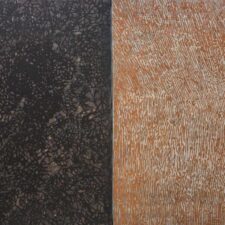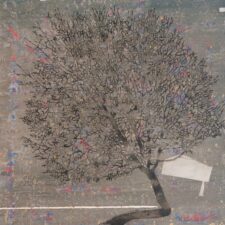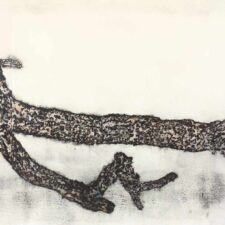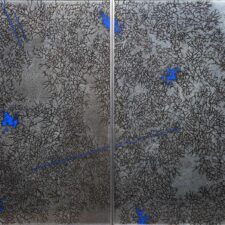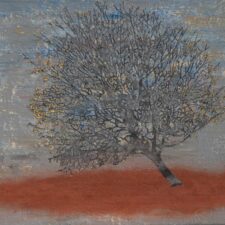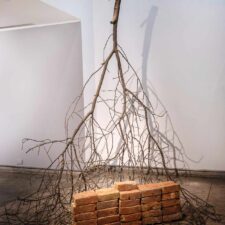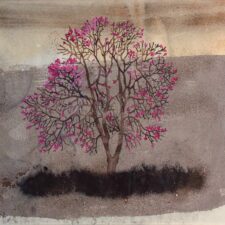
ಬೂದಿ| Būdi (Ash)
“Būdi” (“ash” in Kannada) brings together recent works by G R Iranna that crystalise his sustained artistic engagement with the tree. Ash, an integral part of his recent practice, is at the centre of Iranna’s conceptual concerns in these works – not just as medium and a rich source of symbolic meaning drawing from ideas of philosophy and spiritualism, and social practice, but as the very residual matter of life, indeed of all of nature and the consciousness that pervades it.
Laden with blossoms, their dense foliage etched against the sky, Iranna’s trees are the very image of nature’s beauty and vitality. But it is a beauty harnessed to a core of strangeness, to contemplation of the mystery at the core of life.
Born in an agrarian family in rural Karnataka, Iranna grew up attuned to nature’s cycles – themes which have formed the subtext of many of his works. But it was an encounter with the nearly 3,000-year-old Tree of Tule in Mexico some years ago that led to a near epiphany – a “sudden, spiritual manifestation”. Moved to tears, Iranna remembers marvelling at the mighty Montezuma cypress that looked like a primordial force that had existed since time immemorial, a witness to the rise and fall of empires, to war and devastation, to happiness and joy and love down the ages. And yet, for all that it had seen and the perils it had encountered, the tree remained calm and unperturbed, continuing to flower, fruit, and provide shade and oxygen in accordance with its dharma.
The tree becomes, In this very personal association of ideas, a metaphor for the “socially exploited” and “innocent” victims who, by their “tolerance” and ability to “give without taking”, pose a spiritual bulwark to the ills of the world – to violence, terrorism, injustice, environmental degradation, and such like. The works in Būdi manifest these concerns and themes, stretching and affirming their relevance in newer contexts and fresh narratives.
“What I find interesting is that there is in this exhibition a solidity of material, but it translates into very metaphoric and metaphysical content which takes us into a consciousness which is much more spiritual, much more to do with wisdoms that come from ancient times….”
Iranna’s bronze sculptures of tree logs and branches enact a close parallel with reality such as to deceive most viewers at first glance – a reaction of surprise and wonder leading to a more immersive contemplation of the works’ signification. Nature and art, wood and bronze, lightweight and heavy, common and precious – Iranna works suggest a series of contrasts juxtaposed to underline their metaphorical possibilities and elicit meaning. There’s yet another degree of duality hinted at – the ‘dead’ log finds renewed life as a piece of art, redolent not just with the artist’s consciousness but also with the log’s own life story, and the exigencies of place, weather, and experience which gave it shape.
Roobina Karode
Curator and Art Critic

